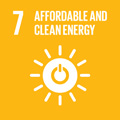- Docente: Andrea Zucchelli
- Credits: 9
- SSD: ING-IND/14
- Language: Italian
- Moduli: Andrea Zucchelli (Modulo 1) Gregorio Pisaneschi (Modulo 2)
- Teaching Mode: In-person learning (entirely or partially) (Modulo 1); In-person learning (entirely or partially) (Modulo 2)
- Campus: Bologna
- Corso: First cycle degree programme (L) in Automation Engineering (cod. 9217)
-
from Sep 16, 2025 to Dec 19, 2025
-
from Sep 15, 2025 to Dec 15, 2025
Learning outcomes
The course aims to provide students with the knowledge related to the architectures of automatic machines and their main subsystems including fluid actuation systems, with particular regard to pneumatic systems. Students are also given an introduction to additive manufacturing technologies and their applications for automatic machines. At the end of the course, the student: - has the ability to analyze the architectures of automatic machines. - can approach a functional design of an automatic machine - can manage some issues related to automatic machines in the perspective of industry 4.0 - can analyze and a pneumatic circuit - can design a simple pneumatic circuit - can apply the knowledge acquired in additive manufacturing in order to approach a mechanical components project.
Course contents
Course Structure
The course is divided into two modules, corresponding to 6 ECTS and 3 ECTS, respectively. Both modules are delivered in parallel throughout the teaching period.
Module 1 – 6 ECTS (60 hours)This module is organized into the following chapters:
- M1-1 Historical Overview of Industrial Automation and Automatic Machines in the Bologna Area
- M1-2 Review of Structural Calculations for Mechatronic Systems
- M1-3 Introduction to the Fundamentals of Industrial Automation
- M1-4 Key Parameters for Calculating the Productivity of an Automatic Machine
- M1-5 General Overview of the Main Architectures of Automatic Machines:
- Asynchronous Intermittent Machines
- Synchronous Intermittent Machines
- Continuous Motion Machines
- Hybrid Architecture Machines
- M1-6 Probabilistic Calculations for Automatic Machines
This module covers the following topics:
- M2-1 Introduction to Fluid Power Actuation Systems for Automatic Machines
- M2-2 Application and Selection of Fluid Power Systems for Groups of Automatic Machines
- M2-3 Development of a Group Project
Readings/Bibliography
- Lecture Notes
- Complementi per macchine automatiche (assembled in the McGraw-Hill Create environment by Andrea Zucchelli), McGraw-Hill Education, August 27, 2019
ISBN-10: 130747454 | ISBN-13: 978-1307474541 - Geoffrey Boothroyd, Assembly Automation and Product Design, CRC Press, Taylor & Francis Group, 2005
- Stephen J. Derby, Design of Automatic Machinery, Marcel Dekker, 2005
- A.A.V.V., Advances in Future Manufacturing Engineering, CRC Press, Taylor & Francis Group, 2015
- A.A.V.V., Future Mechatronics and Automation, CRC Press, Taylor & Francis Group, 2015
- Bruno Lotter, Manufacturing Assembly Handbook, Butterworths, 1986
- Marco Fortis, Monica Carminati, The Automatic Packaging Machinery Sector in Italy and Germany, Springer, 2015
Teaching methods
Course Delivery Methods
The course is structured using various educational tools designed to support theoretical and practical learning of the topics covered. Specifically, the lessons include:
- Presentation of lecture notes prepared by the instructor, using PowerPoint slides;
- Projection of illustrative videos showing the operation of automatic machines;
- A collection of images, calculations, and examples with diagrams, organised by the lecturer in dedicated Excel sheets;
- Developing exercises related to calculations and sizing machine components and automatic machines, using Excel and Wolfram Mathematica.
During class, the lecturer will solve some exercises, while others will be assigned to students in combination with some research for further personal study.
The assigned exercises focus on:
- solving structural problems related to mechatronic systems;
- high-level design and sizing of automatic machines or their production lines.
Solving structural problems requires solid knowledge and complete mastery of the fundamental concepts learned in Physics and Mechanics courses. Many exercises will include open-ended questions; to solve them, students will need to formulate working hypotheses and, in some cases, independently retrieve the necessary technical information using the bibliographic resources provided by the University (e.g., www.sba.unibo.it).
The research activities cover both specific systems required for the operation and transport of automatic machines, and materials used in the construction of the machines or processed by the machines to produce finished products.
This teaching approach aims to encourage curiosity and the ability to autonomously gather and organise technical information to solve real-world problems.
These activities may be carried out individually or in groups. In the case of group work, it is mandatory to include the full names of all group members in the exercise and research notebooks.
Materials to be prepared for the exam
The assigned exercises and research activities must be collected in two notebooks, in digital and/or printed format, with particular attention to:
- The organisation of the content;
- The clarity of the information presented.
Assessment methods
Exam Format
The exam consists of an oral interview with the professor. During the oral exam, the student will be required to:
- Answer theoretical questions.
- Present and discuss the exercises and research collected in their notebooks.
The professor will ask seven questions, divided as follows:
- Three questions on theoretical aspects.
- Three questions on the exercises.
- One question on the research assignments given during the course.
Students are encouraged to use their course notes when answering theoretical questions. These notes may be presented in digital format; there is no requirement to print them. The way a student consults and manages these materials during the oral exam will be evaluated. Specifically, any uncertainty or lack of orientation in retrieving relevant topics from the available materials may result in failing the entire oral exam, regardless of the quality of other answers provided. Additionally, significant uncertainty in explaining theoretical topics will also lead to failing the entire exam, independent of the quality of the other responses.
Discussion of Exercises
Regarding the discussion of the three exercises, the following applies:
If the student fails to demonstrate a clear understanding of the approach used and the logical steps followed during the discussion of even one of the three exercises, the exam will not be passed, regardless of other answers given, whether related to the exercises or the theoretical part.
Final Score
The final grade will be based on the following criteria:
- Accuracy of the technical information provided.
- Correct use of subject-specific terminology.
- Clarity of the presentation.
Teaching tools
PowerPoint presentations
Audiovisual
Files for use in Excel
Files for use in Wolfram Mathematica
Office hours
See the website of Andrea Zucchelli
See the website of Gregorio Pisaneschi
SDGs




This teaching activity contributes to the achievement of the Sustainable Development Goals of the UN 2030 Agenda.
